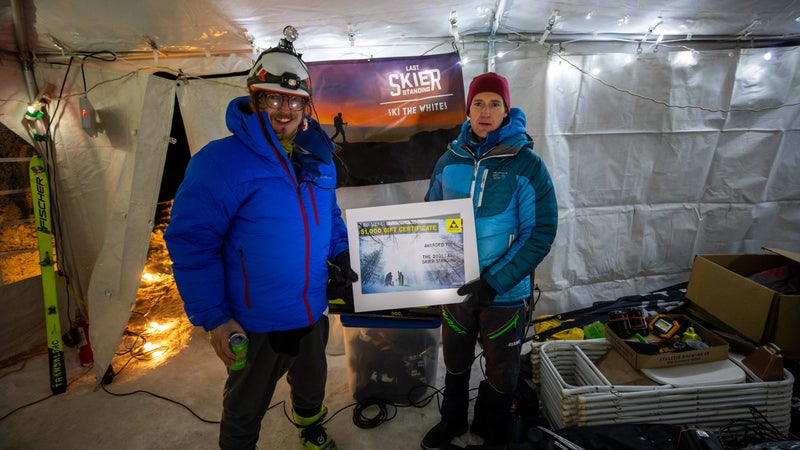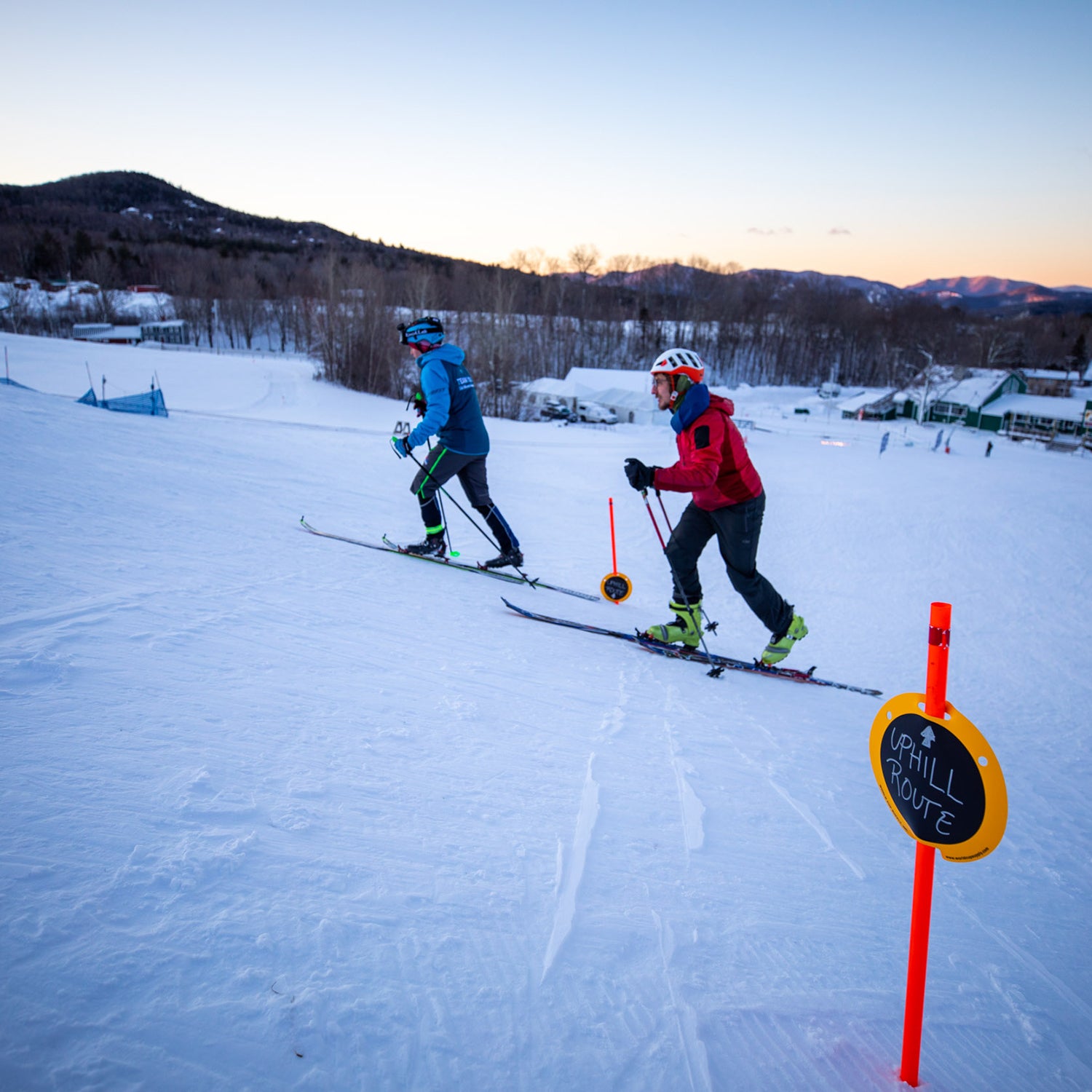After skinning to the top of the same run for the 60th time in as many hours, Ben Eck and Jerimy Arnold turned off their headlamps and took in the stars.¬ÝThe two New England skiers were the finalists in an uncommon event: the second annual Last Skier Standing race in Jackson, New Hampshire. At 10 A.M. on Saturday, February 6, they and 80 other athletes began to lap a 1,000-vertical-foot course. They would climb and descend it¬Ýonce every hour¬Ýuntil they couldn‚Äôt do it anymore.
On Monday morning, the third-to-last skier standing¬Ýcalled it quits. By 10¬ÝP.M. that day, Eck, 29,¬Ýand Arnold, 40,¬Ýhad been slogging it out head-to-head for 18 laps, vying for the title of Finisher.¬ÝSecond place would take home the First Place DNF¬Ýtitle‚Äîno small honor.¬Ý
Last Skier Standing is the brainchild of Andrew Drummond, 39, an ultrarunner and skimo racer who founded a gear shop called in Jackson, New Hampshire, to serve and foster the region‚Äôs community of mountain endurance athletes. The race takes place at Black Mountain Ski Area, a low-key hill with a 1980s vibe where Drummond grew up skiing.¬ÝDrummond drew the inspiration for the race from the Big Dog Backyard Ultra Race in Tennessee, in which contestants run a roughly four-mile loop once every hour, then wash, rinse, and repeat until all but one person give¬Ýup. In its second year, Last Skier Standing drew 25 percent more participants, each of whom paid $125 for the opportunity to push themselves beyond the breaking point in one of the weirdest endurance races in America.¬Ý(Race organizers¬Ýimplemented temperature checks and social-distancing protocols to reduce risk to participants and staff.)
By Monday evening, Eck, a grad student¬Ýand backcountry tele skier who lives in Boston, and Arnold, an¬Ýengineer, ultrarunner, and¬Ýskimo racer from Westford, Massachusetts, had¬Ýalready bested the previous year‚Äôs Finisher by 25 laps‚Äîan additional full day plus one hour of skiing. They had traveled the equivalent of about 150 miles and ascended¬Ýmore than twice the sea-to-summit vertical gain of 29,035-foot¬ÝMount Everest. Usually they had about 15 to 30 minutes between laps before they had to shuffle to the start line again, just enough time¬Ýto grab a snack, change socks, gulp down some of race co-director Monte McIndoe‚Äôs hot Tang, and catch the tiniest of catnaps. Conditions were unfavorable: they faced 40-mile-per-hour gusts and sub-zero temperatures on the second night, and the top 250 feet¬Ýof the course were peppered with rocks and icy¬Ýmoguls, which were particularly difficult to¬Ýnavigate in the dark.¬ÝNeither had any idea when the other would quit, but both hoped like hell it would be soon.¬Ý

In traditional skimo races, contestants race to complete a predetermined route as quickly as possible. According to the United States¬ÝSki Mountaineering Association, a typical individual skimo race should last around two hours and include a minimum elevation gain of about 4,500 feet. Sprint and vertical categories are even shorter.¬Ý‚ÄúNormal skimo races are much higher intensity,‚Äù Arnold says. ‚ÄúThere‚Äôs a set course you finish and you can always tell who‚Äôs in front or behind.‚Äù Last Skier Standing is more psychologically challenging, he says, because ‚Äúyou can never tell who‚Äôs winning and there‚Äôs no real way to push anybody.‚Äù¬Ý
‚ÄúThe form invites a lot of dark horses,‚Äù says Eck, who was often the last skier to the top of the run as the pack thinned. ‚ÄúYou don‚Äôt need to be the most fit‚Äîyou just need to be fit enough and stupid or stubborn enough to stay in a long time.‚Äù This year, Eck was the dark horse. His only real training was a hut trip in Colorado earlier in the winter during vacation from Northeastern University, where he‚Äôs working on a Ph.D. in civil and environmental engineering.¬Ý‚ÄúI‚Äôve never been that good about training,‚Äù Eck says. ‚ÄúI just mostly like to ski and bike a lot.‚Äù A broken telemark binding early in the race did not hold him back. He jury-rigged it and got on with the race. ‚ÄúIt didn‚Äôt ski great, but it skied about the same as all tele gear,‚Äù Eck jokes. His outerwear was similarly nontechnical: he showed up in a full-body raccoon costume¬Ýand proceeded to ski 25 laps in it.
Not long after they slid into the base area after their 60th lap, Eck saw Arnold taking off his boots for what looked like the final time. Sure enough, Arnold walked over to tell Eck that he was done. After another cup of McIndoe‚Äôs hot Tang, Eck made his way to the starting line to¬Ýset off for number 61: the victory lap.


